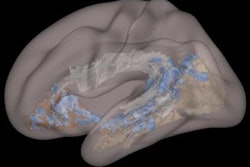Dr. Enver Tahir, a radiologist at University Medical Center Hamburg-Eppendorf, and colleagues reviewed 39 female patients (mean age, 51 ± 11 years) with newly diagnosed breast cancer. All of the women underwent 3-tesla baseline cardiac MRI approximately 10 days before the start of therapy. The first follow-up cardiac MRI exam was performed some 13 days later, and a second follow-up MRI scan was performed approximately eight months after the completion of chemotherapy.
The MRI protocol included T1 mapping and steady-state free precession (SSFP) cine sequences to determine cardiac volumes and function. With the help of processing software, the researchers analyzed the accumulated cardiac MRI data.
Increased left ventricular mass and T1 relaxation times were key indicators for cardiomyopathy in this patient population immediately after treatment, they found. Although ventricular mass remained high at the second follow-up, T1 relaxation times had decreased.
These two measures could provide an early indication of cardiomyopathy in breast cancer patients before they experience symptoms, the researchers concluded.



















